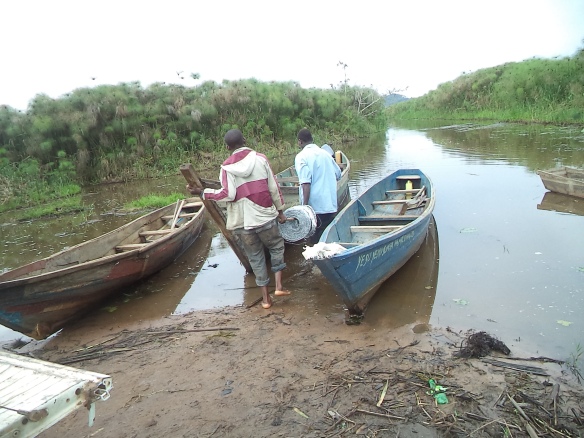The Uganda Wildlife Education Centre (UWEC) received 40,000,000 shillings in Small Grants from the Piloting Initiatives in Environment and Climate Change (PIEC) project to do biodiversity conservation and promotion of eco-tourism at Makanaga Wetland in Wakiso District. UWEC implemented this project in partnership with Shoebill Stock Foundation and Entebbe District Wildlife Association.
PIEC is funded by UNDP and implemented by WWF – Uganda Country Office.
Makanaga Wetland System is located in Bussi Sub County in Wakiso. UWEC did the project mainly to raise the profile of Makanaga wetland by identifying activities that could enhance community participation in biodiversity conservation and support livelihoods.
An inventory of important birds and plants of Makanaga wetland has been produced. Other treasures and potential tourism attractions were identified. Makanaga is home to the rare and threatened Shoebill Stork. Other important and common birds include common terns, gull billed terns, Goliath Heron, African Jacana, Great Cormorant, African fish eagle, Egyptian Geese and others. The full list has 135 birds.
The wetland hosts animals like otters, Africa civet cats, Sitatungas, black and white colobus. It also has important plants like Cyperus Papyrifera, Afromomum angustifoliu. Makanaga is a breeding site for different types of fish and that is why different water birds frequent this wetland.
The project established boat trails to ease the viewing of this biodiversity. Donkey trails and an observatory tower will be set up.
The major threats to this wetland include poaching, bushfires, degradation through agricultural activities, pollution of water through use of pesticides, herbicides, bad fishing methods and lack of awareness by the local people about the importance of this area.
With the small grants funding UWEC has trained 20 community members in tour guiding and equipped them with knowledge on wetland management and benefits.
In addition, soil and water analysis of Makanaga was done to help determine sanitation issues and the productivity of the sites sampled. The community now knows which sites are suitable for what plants, and the water analysis helped in identifying the suitable sites for fish breeding.
On learning that the wetland is a rich marsh with tourism potential, the community now takes pride in their area and have committed to working together to grow the wetland’s tourism potential.


